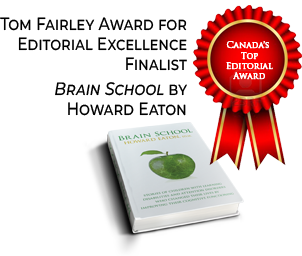When discussing how I write a blog post, I often liken it to writing a term paper. For me, the length, process, and deadlines are all similar to writing a paper. After I decide on a topic, step 1 is jotting down all my own original ideas about it (in a very stream-of-consciousness way), then doing a bunch of research and making notes on what I’ve learned. I then let it all simmer in my mind for a day or two. At this stage, it’s all very messy, scarily messy. Step 2 consists of examining my jumbled ideas and notes and trying to organize them into a coherent, logical whole—a piece that flows and makes sense, one idea leading organically into the next. And that’s where good transitions come in.
What are transitions?
Sometimes called transitional devices, transitions are words, phrases, sentences, and sometimes entire paragraphs that focus on the relationships between different ideas in your writing and aid in its logical flow. Transitions connect your ideas, whether they are disparate or related, whether between sentences, between paragraphs, or between sections (in nonfiction) or scenes (in fiction). They can be thought of as bridges or links between ideas, cues for readers to easily follow your thoughts, your arguments, or your scenes as they flow smoothly from one into the next. They also help you expand on a single idea, broaden it, without losing the substance of the original idea. Effective transitions render your ideas and arguments clear, concise, connected, and logical.
Do note that transitions aren’t a substitute for good organization. If your sentences and paragraphs are already organized in a logical manner, good transitions will emphasize and enhance the relationship between them and assist the reader in following one effortlessly into another. If they’re not well organized, they can distract from comprehension rather than improve it.
Different kinds of transitions
A transition should occur when you’re switching from one idea to another idea or when you’re building on a single idea. As I’ve mentioned, this can happen at the sentence, paragraph, and section (nonfiction) or scene (fiction) levels. Several kinds of transitional devices exist, and each helps the reader to form specific kinds of assumptions. Some help readers develop conclusions from the preceding ideas, while others lead readers forward into the next part of the idea or argument. (See list at the end of this article.)
Transitions between paragraphs are the most common. A transition can be made by simply adding one small word or phrase such as but or therefore or as a result, or it can be a more complex restructuring to help ideas flow more logically.
Punctuation can also serve to help your transitions, in particular, the little-used semicolon. Consider the following two sentences, and notice how the second example is very, very subtly stronger because of the use of a semicolon. Of course, the word and could also be used to connect the two sentences, but it isn’t as effective as the semicolon, which connects the two related ideas.
Weaker: Jordan has the secret key, and he figures Bobby must know it. Bobby must have always suspected that Jordan’s parents possessed it originally.
Stronger: Jordan has the secret key, and he figures Bobby must know it; Bobby must have always suspected that Jordan’s parents possessed it originally.
In dialogue, a dialogue tag (or attribution) or short sentence can serve to provide a transition between two disparate thoughts by the same speaker, as in the following example, where “she lowered her voice” provides the transition:
“I feel sorry him. He lives in a trailer with his dad and sister, and his bedroom is a cold-storage room. We got to talking and I let a few things slip.” She lowered her voice. “It was actually me who stole his notes because I don’t want him to get involved.”
How do you know whether you’re using transitions effectively?
Sometimes it’s tough to spot transition problems in your own writing. That’s because in your head, you’ve already connected the ideas together, whether they’re points in building an argument in nonfiction or a scene that’s unfolding in fiction. On top of that, you’ve probably gone over your manuscript until you’re cross-eyed and you can no longer see the more subtle problems (or even the glaring ones). Unless you’re a highly skilled writer, no matter how much you try, your transition problems may elude you. That’s where other people come in. A few trusted beta readers and a good editor can help you see where your writing may be lacking in effective transitions. Spotting such problems is much easier for a new reader, one who’s looking at the manuscript with fresh eyes and a fresh mind.
While beta readers may not have the editorial skill to identify transition problems as such, they’ll probably recognize where something’s amiss. They may call your writing choppy or say it seems to lack logical flow. They may have trouble following your train of thought or say you write in a stream-of-consciousness style (which is not usually a compliment). They may feel your ideas don’t seem related. Or the ideas may seem vaguely related, but somehow they just don’t connect together properly. Readers may sense that you’re trying to make an argument with a logical sequence of points, but it doesn’t come together in the end as a cohesive whole. If you’re writing fiction, your beta readers may be unable to visualize some of your scenes in their minds, which is often a direct consequence of weak or absent transitioning.
How to write effective transitions
First, organize your ideas in as clear and logical an order as possible. If your ideas aren’t at least somewhat organized to begin with, your transitions won’t be as effective as they could be. After polishing as best you can, it’s time for your beta readers. If your writing is returned from them with some of that criticism about lack of flow, lack of logical progression, or disconnected ideas, it’s time to go back and examine it for transition problems.
Scrutinize each sentence to see whether it flows logically into the next. Pay careful attention to how one sentence’s idea is related to the next sentence’s idea. Do the same with paragraphs. Try to make a specific, logical connection between material from the previous sentence or paragraph and the current sentence or paragraph. If you simply can’t find a way to make the connection between them, chances are one of the ideas or sentences is in the wrong place altogether, and it’s probably best to move it or remove it.
Examples of simple word or phrase transitions
Below, to illustrate some transitions, I’ve deliberately used simple sentences showing a sequence of events. In the weaker examples, there is no connection or transition between one sentence and the next. In the stronger examples, all the ideas flow in a logical, smooth progression, making for much easier reading. The transitions I added in the stronger examples are in red text.
Weaker: Stephanie ate a rotten banana. She went to bed. She had indigestion and a sleepless night. She got up and forced herself to go to work.
Stronger: Before going to bed, Stephanie ate a rotten banana; consequently, she had indigestion and a sleepless night. The next morning, despite her discomfort, she got up and forced herself to go to work.
Weaker: Seán Cullen is a well-known Canadian comedian and radio and TV personality. His résumé lists other achievements. He is also the author of five young-adult fiction books.
Stronger: Seán Cullen is a well-known Canadian comedian and radio and TV personality. Notwithstanding his relative fame and success, his five young-adult fiction books are not as familiar to his fans.
Weaker: Jordan decides that when the current crisis has subsided, he’ll take a closer look at his mother’s diary. Live in the moment and forget your worries about what has occurred and what will transpire is advice he’s seen in the diary.
Stronger: Jordan decides that when the current crisis has subsided, he’ll take a closer look at his mother’s diary. But for now, he’ll live in the moment, forgetting his worries about what has occurred and what will transpire—advice he’s already seen in the diary.
Examples of more complex additions or restructuring
In each case, the weaker example contains several disconnected, seemingly unrelated sentences. The transitional sentence or phrase I’ve written in the stronger example helps form a connecting bridge between the two disparate ideas, so they make logical sense together.
Weaker: “People here are nervous when Zelda’s around because of her psychic abilities. Going before the council is a bad thing for you because people who do usually are banished from here.”
Stronger: “People here are nervous when Zelda’s around because of her psychic abilities. That’s her problem. In your case, going before the council is a bad thing because people who do usually are banished from here.”
Weaker: Why are all the adults always dodging questions when Jordan asks about his family background? His friends—the ones he still has left—had never had mentors, and they’d never had endless lessons, never been sworn to endless secrecy.
Stronger: Why are all the adults always dodging questions when Jordan asks about his family background? They make Jordan feel completely isolated. Even his remaining friends couldn’t relate—they’d never had mentors, and they’d never had endless lessons, never been sworn to endless secrecy.
Weaker: Jordan sits in his room, stewing about having been grounded until the weekend—five whole days. Well, it won’t be much different from his regular life.
Jordan is awakened by a strong wind blowing through his window. He has left it open again by accident. Looking at the alarm clock, he sees he’s been napping; it is just nine on Friday evening.
Stronger: Jordan sits in his room, stewing about having been grounded until the weekend—five whole days.
The school week has passes without incident. Jordan comes straight home from school dutifully each day and stays home each evening. Being grounded isn’t much different from his regular life.
On Friday night, he is awakened by a strong wind blowing through his window. He has left it open again by accident. Looking at the alarm clock, he sees he’s been napping; it is just nine in the evening.
Common transition words and phrases
Following are some of the most common transition words and phrases, separated into categories for their specific use. In terms of grammatical parts of speech, most of these are called sentence adverbs—an adverb modifying an entire sentence—or in the case of phrases, they function as sentence adverbs.
- Additional information – and, in addition to, additionally, furthermore, moreover, besides, incidentally, similarly, likewise, as well, also
- Compare/contrast/show exception – despite, in spite of, however, although, but, yet, whereas, notwithstanding, nevertheless, nonetheless, vis-à-vis, on one hand/on the other hand, conversely, on the contrary, in contrast, in comparison, relatively, similarly, in the same way, that said, having said that, likewise, still, instead, with the exception of
- Sequence/time – immediately, meanwhile, during, subsequently, soon, next, following, afterward, in due course, over time, then, until then, since, later, eventually, hereafter, thereafter, finally, previously, formerly, before, once in a while, sometimes, often, always, never, first, second, third, etc.
- Cause and effect – because, consequently, in consequence, thus, therefore, hence, as a result, for, since, so, for that reason, in that case, in any case
- Showing proof – evidently, obviously, clearly, plainly, apparently, certainly, it follows that, undeniably, undoubtedly, unquestionably, assuredly, theoretically, presumably
- Giving an example – for example, for instance, to illustrate, to explain further, on that note, for that matter, to expand on, to clarify, to specify, specifically, typically, generally, in general
- Relative positions – beyond, nearby, in the distance, farther, closer, above, below, beneath, beside, adjacent to, proximate to
- Repetition and emphasis – as stated, as we’ve seen, to restate, indeed, in fact, of course, definitely, obviously, indeed, absolutely, emphatically, unquestionably, certainly, undeniably, significantly
- In conclusion – in summary, to sum up, to conclude, finally, basically, essentially, effectively, generally, in general, in brief, briefly, after all, all in all, therefore, thus, in the final analysis
In conclusion
Not much is written or taught about transitions in writing, yet all good writing makes effective use of transitional devices. Good transitions make the reader want to read more, to see more examples, to make comparisons, to draw conclusions, to learn how a point is proven or why an argument has merit, to be able to follow and visualize scenes in fiction. Do you want your writing to connect with your readers? Then make sure your ideas, sentences, and paragraphs are connected with effective transitions. They’re needed in any writing in which it’s important to deliver a clear message. And isn’t delivering a clear message the purpose of just about all writing?
_________________________
Sources:
- The Purdue Online Writing Lab (OWL)
- The University of North Carolina Writing Center





5 Responses
Interesting lessons are provided in this blog. I agree. The paragraphs in a novel must ‘flow’ or the reader can get confused. There is no substitute for organizational skills. JP
Thanks for your comment, June. Much appreciated! Yes, the foundation of any piece of writing must be good organization. Once that is achieved, effective transitions smooth the piece out and help it flow.
Great piece! And I like the butterfly picture. 🙂
Thanks, Kevin! Without question, the most fun part of writing blog posts for me, after I’ve completed the writing, is finding images that I find appealing AND that gracefully or subtly allude to the topic I’ve written about.